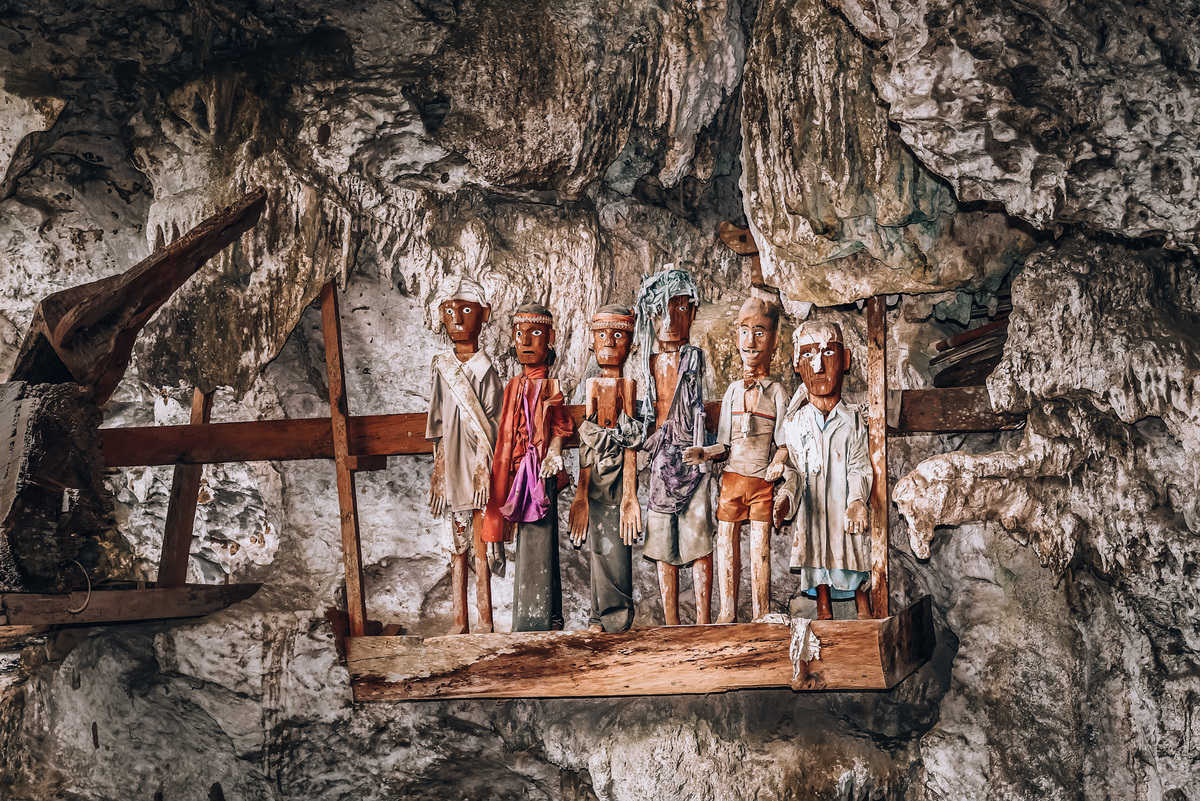Traditional markets function not only as a means of sale and exchange, but in fact have many other important roles. Bolu Market and the Makale Market are the two largest markets in TanaToraja, South Sulawesi, and clearly reflect the culture and civilization of the Torajan people and the surrounding communities. But before learning about the markets themselves, one must first be familiar with the history and roles of the market, as well as their relation to the Torajan Society.
In the past, slaves, firearms, and coffee were some of the main commodities in the Torajan trading system. In the 17th century, Toraja had become part of the global trading system, to trade slaves that were being sent to Siam. In the mid-19th century, with coffee and firearms being added into the goods to be traded, the trading increased rapidly. Coffee and slaves were exported from Toraja, while guns and fabrics were brought into Toraja. Although Toraja’s landscapes are mountainous and seemingly inaccessible, this did not cause a barrier to its position in the global trade.
During that time, the markets which were run by the various ethnic groups throughout Toraja despite being often at war with each other. The largest markets in Toraja at that time were the Kalambe Market, (now known as Bolu Market,) and Rantepao Market, (now known as the Rantepao Morning Market).
Bolu market is located in Rantepao, the tourist center of Toraja, and is a popular tourist attraction, and an interesting place to visit. As scheduled, the market only opens once in 6 days, and is the main sales center for buffalo as well as pig. Vegetables, fruits, coffee and other food products can also be found in this market.
On market day, the “streets” of the Bolu are bustling with the local people buying and selling, as well as foreign and domestic tourists who come to watch the show. The number of buffalo sold can reach up to 500, especially during the time of ceremonies. The price of a buffalo covers a wide range, depending on color, pattern, and size. A small black buffalo would cost approximately 5 million rupiah, while a larger one of the same color can be sold for 10 – 15 million rupiah. The Tedong Bonga, or spotted buffalo, which are considered superior can be sold for tens of millions of rupiah, while the very rare albino buffalos can reach a selling price of even hundreds of millions.
If Buffalo are the main commodities sold in Bolu, the equivalent in Makale market would be pigs. Makale market is housed in a block of approximately 50 x 20 meters, and is often referred to as “The Swine Market.” The market is divided into three different sections: one for live piglets, another for live adult pigs, and another for pork.
Toraja piglets are kept in rice sacks, only opened for prospective buyers to take a peek, while adult pigs are usually tied to bamboo posts in the main hall. Piglets are usually purchased to be reared and bred. The price on pigs starts at around 500,000 – 750,000 for a piglet, while adults cost between 3 – 9 million rupiah, though some can be sold for tens of millions, should their weight by chance rival that of a buffalo. Unlike the buffalo, the black pig is more expensive than the albino or spotted pig. Like the other markets, Makale is open only once in six days.
Although the majority of Toraja’s population are Christian, most still adhere to the teachings of Animism, giving animals an extremely important role in Torajan culture. Buffalos are a requirement that must be met in any traditional ceremony, especially funerals, as it is believed that the buffalo, when slaughtered, act as a vehicle for the spirit of the deceased to reach Nirvana.
Buffalo and pigs also function as a status symbol. The higher the position of the family organizing the ceremony, the more buffalo must be slaughtered. For middle class families, 8 buffalo and 50 pigs are the mandatory number that must be met when performing a traditional funeral. For nobility, as many as 25 – 100 buffalo may be slaughtered.
Though countless things have changed over the centuries, some things remain the same. In Toraja, the very existence of these markets is deeply integrated with theirculture and traditions, and market days form a part of the heritage of Torajan society that can never be separated.
Explore other Toraja's magical heritages here. Book yours now!


















